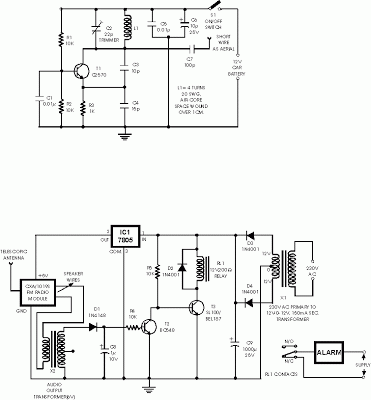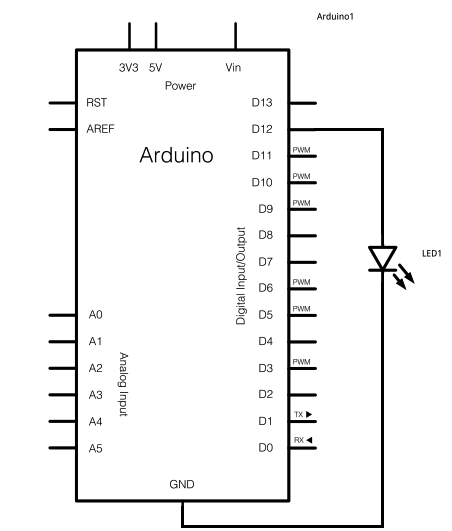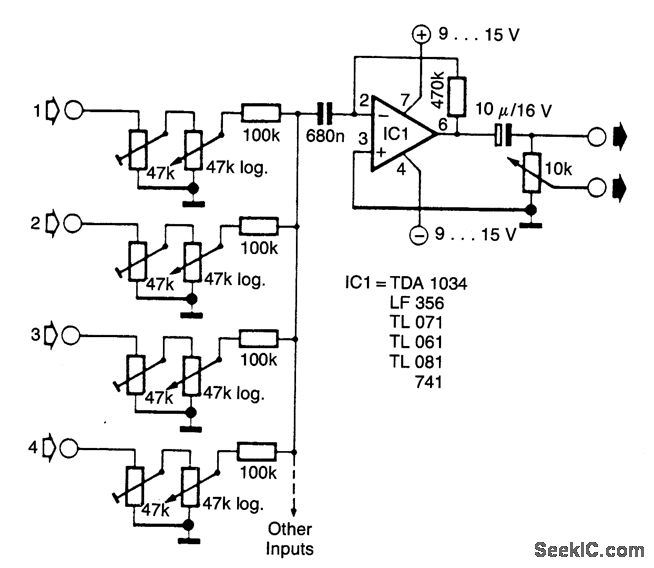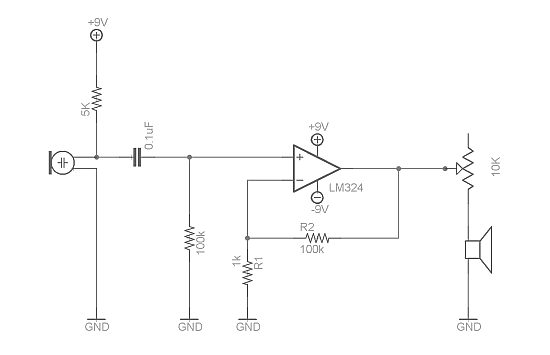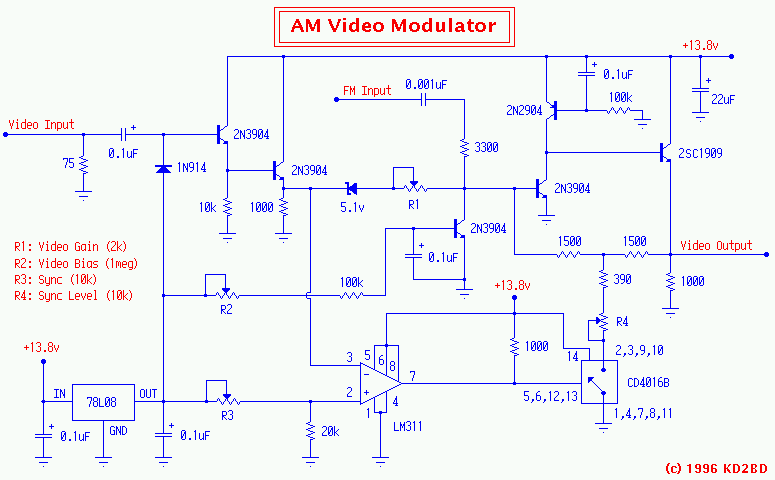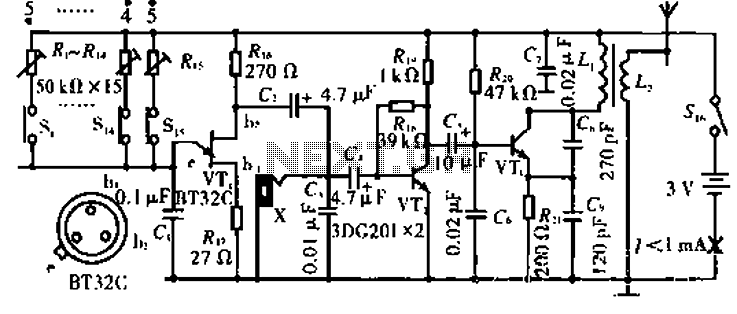
Wireless video camera link
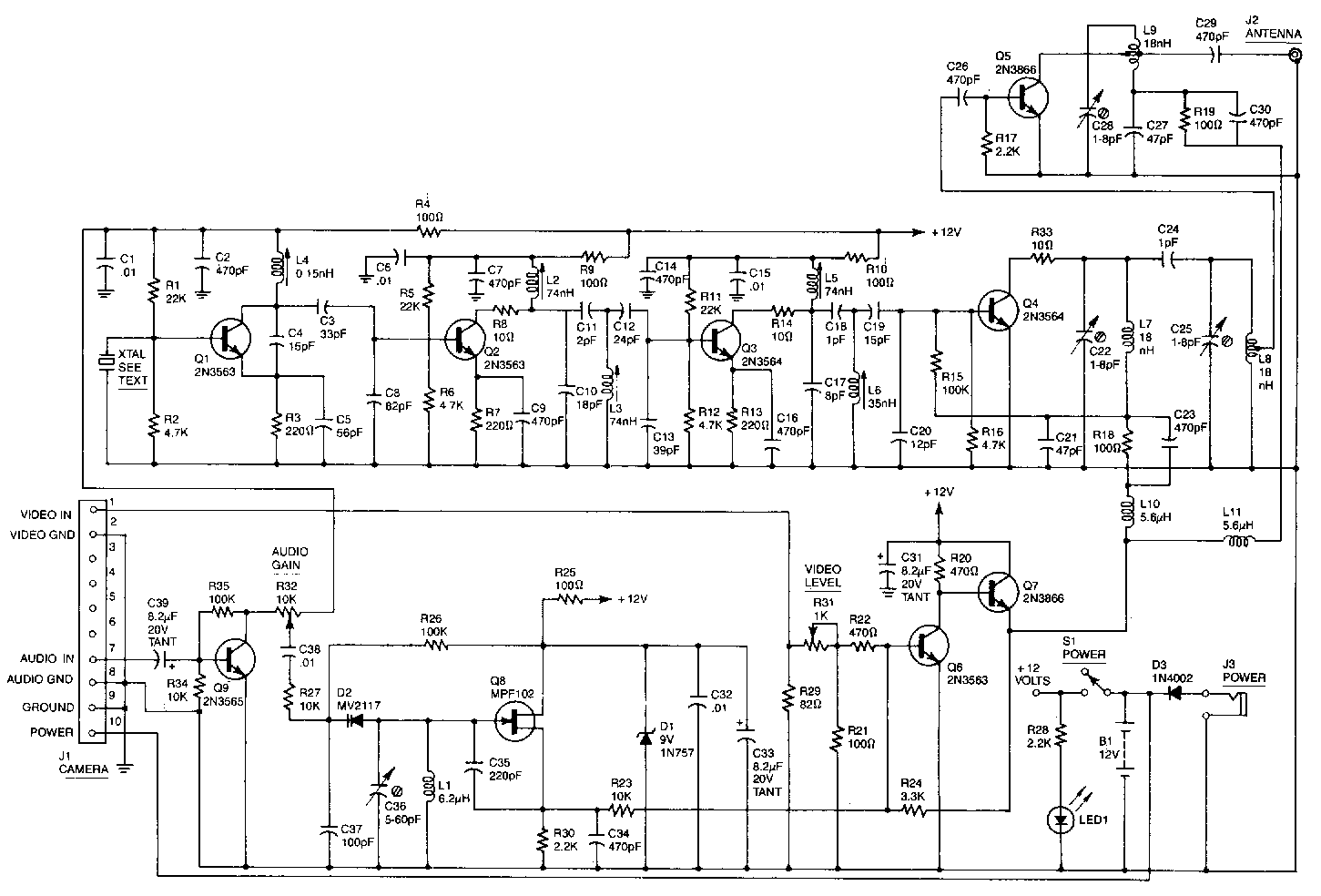
This high-performance video camera link transmits signals from a video camera to a VCR or from a VCR to TVs throughout a home. The initial stage of the RF chain features a crystal-controlled oscillator, Q1, operating at a frequency range of 60 to 65 MHz, which corresponds to one-eighth of the final output frequency. The oscillator generates a signal of approximately 6 dBm (4 mW) that powers three frequency doubler stages. The cumulative effect of these doublers increases the input frequency by a factor of eight, resulting in the final output.
The described video camera link circuit is designed to facilitate the transmission of video signals with minimal loss and high fidelity. The crystal-controlled oscillator, Q1, serves as the foundational element of the RF chain, ensuring stable and precise frequency generation. Operating within the range of 60 to 65 MHz, the oscillator is crucial for maintaining the integrity of the transmitted signal. The output power of 6 dBm, equivalent to 4 mW, is sufficient to drive the subsequent stages effectively.
The three frequency doubler stages are critical components of the circuit, as they amplify the signal frequency to the desired output level. Each doubler stage operates by taking the input signal and producing an output that is double the frequency of the input. When cascaded, these stages achieve an overall frequency multiplication of eight, which is essential for ensuring that the final output frequency meets the requirements for transmission to VCRs and TVs.
This design not only emphasizes performance but also aims to minimize interference and maintain signal clarity over longer distances. By utilizing a crystal-controlled oscillator and carefully designed frequency doublers, the circuit ensures that the video signals remain coherent and robust, providing high-quality video transmission suitable for home entertainment systems. The overall architecture of the circuit is optimized for ease of integration into existing setups while delivering superior performance for video signal transmission.This high-performance video-camera link transmits signals from your video camera to your VCR, or from your VCR to TVs throughout your home. The first stage of the rf chain is a crystal-controlled oscillator, Q1, with a frequency of 60 to 65 MHz, which is one-eighth of the final output frequency.
The oscillator produces a signal of about 6 dBm (4 mW) that drives three stages of frequency doublers. The combined action of those doublers multiplies the input frequency by eight for a final output 🔗 External reference
The described video camera link circuit is designed to facilitate the transmission of video signals with minimal loss and high fidelity. The crystal-controlled oscillator, Q1, serves as the foundational element of the RF chain, ensuring stable and precise frequency generation. Operating within the range of 60 to 65 MHz, the oscillator is crucial for maintaining the integrity of the transmitted signal. The output power of 6 dBm, equivalent to 4 mW, is sufficient to drive the subsequent stages effectively.
The three frequency doubler stages are critical components of the circuit, as they amplify the signal frequency to the desired output level. Each doubler stage operates by taking the input signal and producing an output that is double the frequency of the input. When cascaded, these stages achieve an overall frequency multiplication of eight, which is essential for ensuring that the final output frequency meets the requirements for transmission to VCRs and TVs.
This design not only emphasizes performance but also aims to minimize interference and maintain signal clarity over longer distances. By utilizing a crystal-controlled oscillator and carefully designed frequency doublers, the circuit ensures that the video signals remain coherent and robust, providing high-quality video transmission suitable for home entertainment systems. The overall architecture of the circuit is optimized for ease of integration into existing setups while delivering superior performance for video signal transmission.This high-performance video-camera link transmits signals from your video camera to your VCR, or from your VCR to TVs throughout your home. The first stage of the rf chain is a crystal-controlled oscillator, Q1, with a frequency of 60 to 65 MHz, which is one-eighth of the final output frequency.
The oscillator produces a signal of about 6 dBm (4 mW) that drives three stages of frequency doublers. The combined action of those doublers multiplies the input frequency by eight for a final output 🔗 External reference
